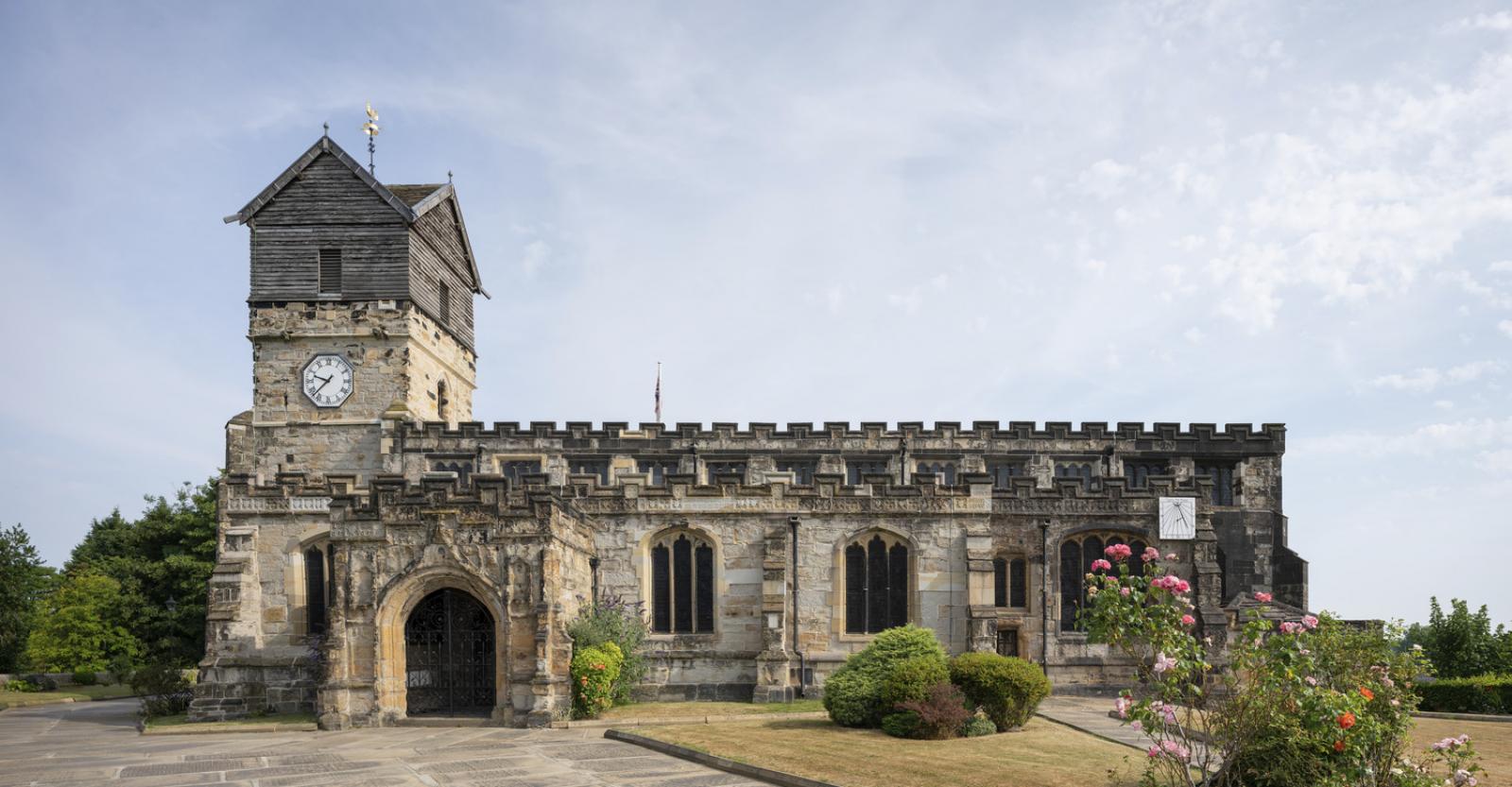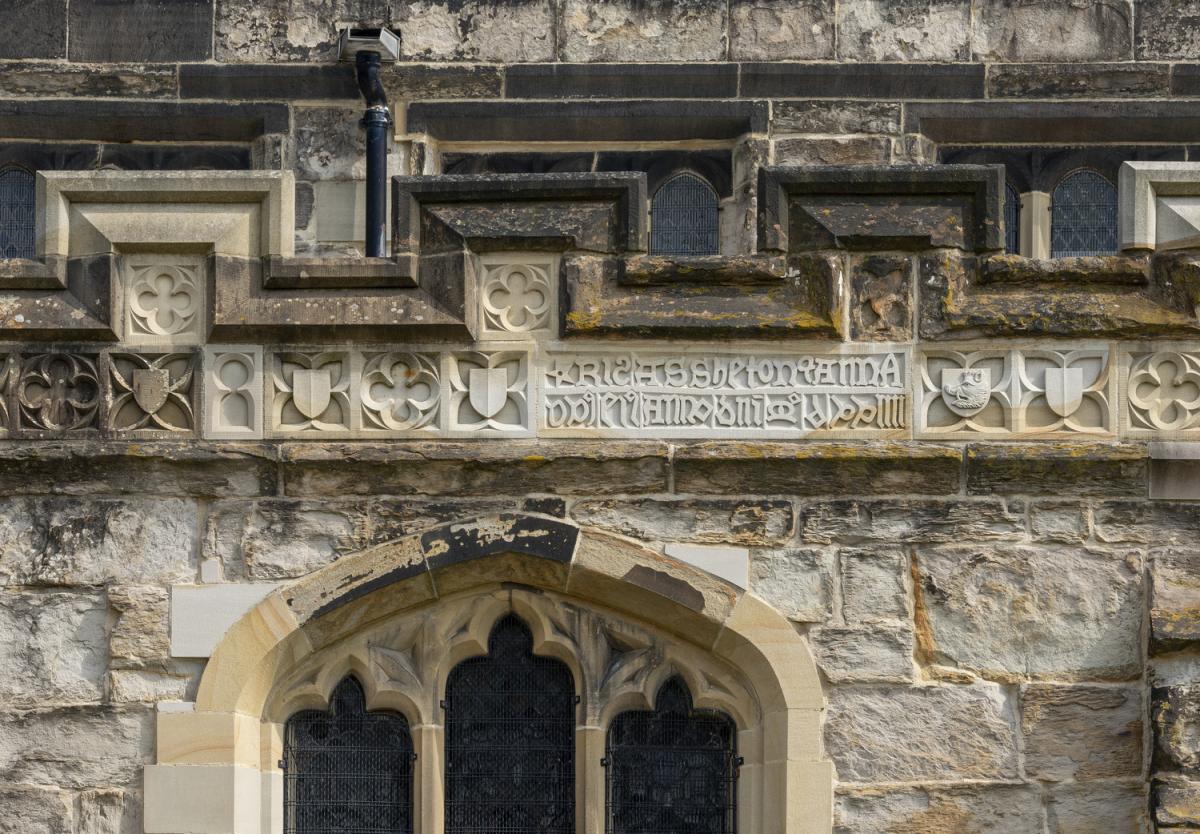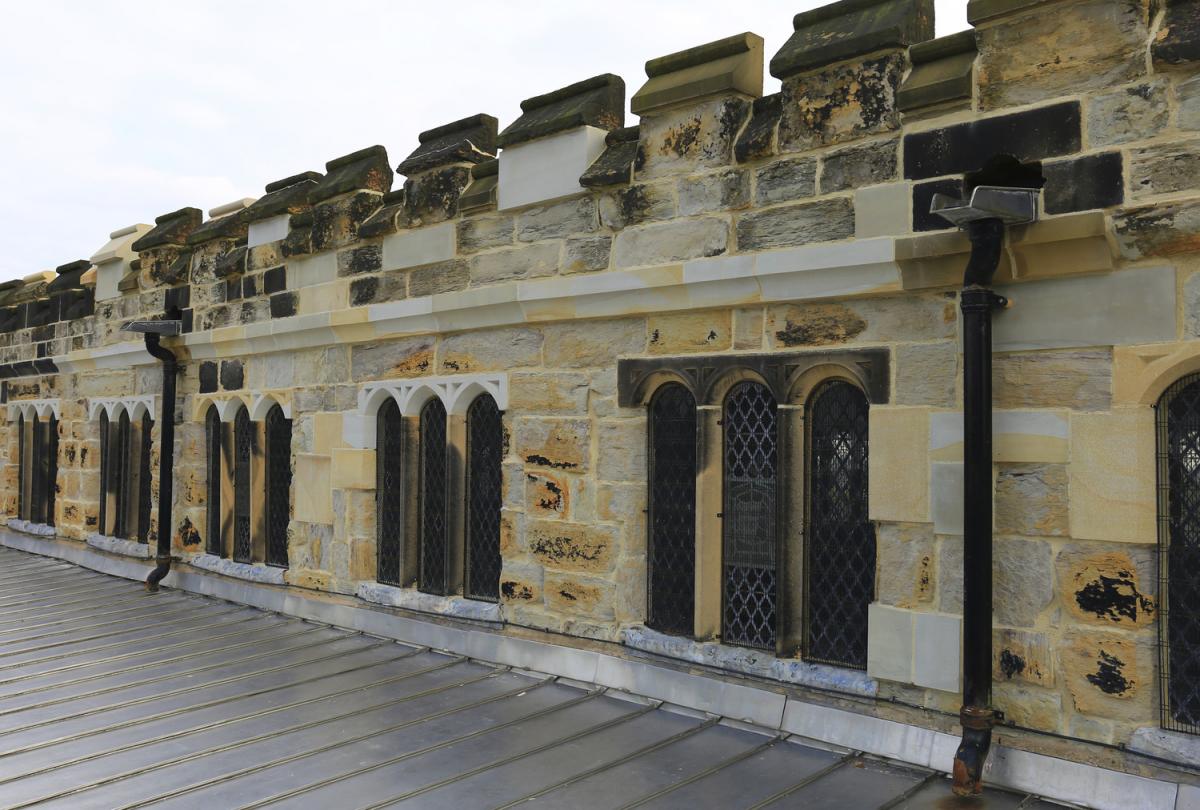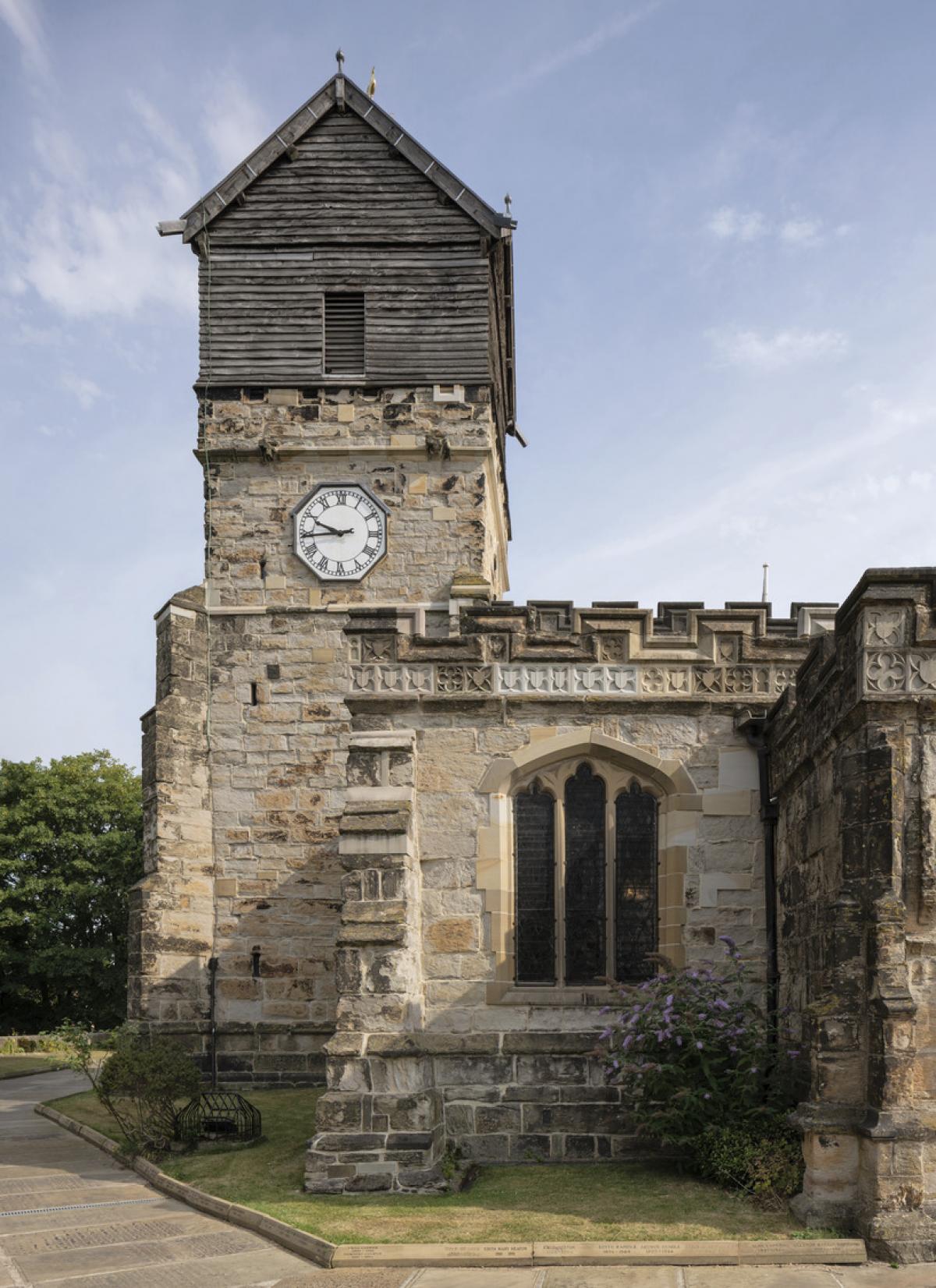
Grade I listed St Leonard’s has been an important part of local life in Middleton for at least 900 years. It features a number of elements of historic interest including a 15th century stone tower surmounted by a weather boarded belfry, believed to be one of only two of its type in the country.
The church was built from a ‘cross-bedded and part ripple cross laminated’ sandstone much of which was laid in vertical beds making it susceptible to delamination. Delamination was most evident on the church tower, and a medieval inscription on the south aisle had almost disappeared along with much of the rest of south façade decoration.
Inside the church, a 1907 Edgar Wood wooden ceiling in the nave and side aisles was also vulnerable to water penetration unless damaged joints in the stainless-steel roof and flashing were fixed.

With our support, the church was awarded a NLHF grant to undertake masonry repairs and re-point the tower, north and south clerestories, and south aisle walls.
The main technical and aesthetic challenge was the extent to which stone should be dressed back to a sound surface or replaced entirely. String courses on the tower were almost entirely replaced to protect the masonry below. The remainder of the tower was repointed with minimal stone replacement.
Stone on the north clerestory was in a very poor condition. Much stone was replaced in this area and the whole wall repointed with lime mortar. All merlon stones on the battlemented parapet were removed and refixed on stainless steel dowels to secure them again vandalism. The south clerestory was repaired in a similar manner.

The south aisle is surmounted by a parapet wall decorated with carved quatrefoils and inscriptions. The amount of delamination in these stones was affecting the integrity of the parapet so many needed to be replaced. The Church Fabric Team were keen to see the inscription stones re-carved to tell the church’s story once again.
Extensive research was carried out to ensure that the stones could be authentically replaced. On-site plaster casts were also produced that brought out further details that were not visible to the naked eye, which further assisted the stonemasons. All ashlar masonry was de-scaled to remove loose and delaminating stone, and all cement pointing was removed with joints re-pointed using lime mortar.

The clock faces were refurbished and the decayed timber frames surrounding the dials replaced with hardwood frames and further protected with lead flashings. Corroding iron fastenings holding back the stone dials were replaced with stainless steel.
The tower roof was stripped and re-tiled using the original stone tiles made up with a handful of new tiles. The valleys were re-leaded with new rainwater chutes. The gable capping boards were replaced and protected with new lead. The weathercock and compass points were repaired and gilded.
The medieval church is in need of continuous maintenance and repair. This project, however, has addressed some of the most serious repair needs, helping safeguard the church’s significant, historic fabric for the future.
The addition of a new disabled toilet has made the church more accessible to visiting congregation and the newly refurbished kitchen has enhanced the visitor experience by allowing the church to offer sandwiches and hot food for which it can charge. This income stream will play an important part in supporting the future care and maintenance of the building.
Image credits
Andy Marshall ©
Buttress: Steven Welsh
Edward Kepczyk
Edward specialises in the conservation, informed repair, and creative reuse of secular and ecclesiastical buildings, including some of the country’s most significant historic sites.
Courtnay Ives
Courtnay is an architect whose experience includes a range of specialisms with heritage, ecclesiastic and non-secular schemes.

